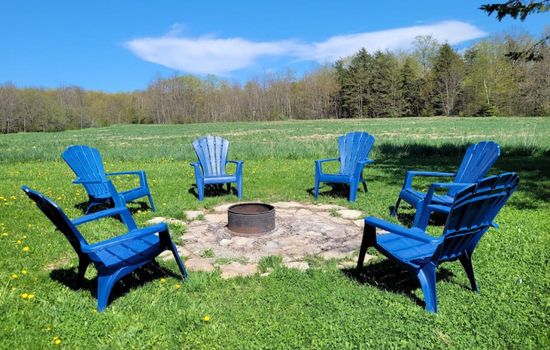The visitor centre at Bruce Peninsula National Park is open daily from May 1 to October 31 from 9:00 am to 5:00 pm, and from November 1 to April 30 from 9:00 am to 5:00 pm, except for statutory holidays.
At Bruce Peninsula National Park, daily entrance fees are $9 for adults, $7.75 for seniors, free for youth, and $17.50 for a family/group. Annual fees are $43.50 for adults, $38.25 for seniors, and $87.25 for a family/group. Youth admission is free.
From Toronto: Hwy 400 → Hwy 69 → Hwy 6 North to Tobermory. From Detroit: Cross into Canada → Hwy 402 E → Hwy 401 E → Hwy 6 N to Tobermory. Bus services are available from Toronto and Detroit to towns like Owen Sound or Wiarton, with local transport to the park.
At Bruce Peninsula National Park, parking for the Grotto is at Cyprus Lake Road’s P1 lot, requiring reservations from April 30 to October 31. No overnight parking; 4-hour time slots. Fees apply. Limited spots for all vehicle types, including RVs and motorcycles. No early access before park hours.
Accessibility & permits
Emergency
- Cell service availability:Partial
Information not accurate?
Help us improve by making a suggestion.
Bruce Peninsula National Park, located along Lake Huron in Ontario, spans over 156 km² of cliffs, forests, and turquoise waters. The park is famous for its rugged shoreline, Bruce Trail, wildlife, and access to nearby Fathom Five National Marine Park. Hike through the Niagara Escarpment, paddle the coastline, snorkel shipwrecks, or stargaze in a designated Dark Sky Preserve. From limestone cliffs to backcountry trails, this Canadian park offers nature lovers a gateway to breathtaking experiences.
- Area (km²)
- 94.95
- Annual visitors
- 494 000
- Established year
- 1987
Top 3 Facts about Bruce Peninsula National Park
The park is home to over 400 million-year-old rock formations, making it one of the oldest geological areas in the world. It also hosts half of the world’s dwarf lake iris, a vulnerable species.
A designated Dark Sky Preserve perfect for stargazing with minimal light pollution.
Niagara Escarpment cliffs soar up to 200 feet above Georgian Bay’s waters.
Family programs
- Scavenger Hunts
- Self-guided Tours
- Workshops & Hands-on Activities
Travel Tips
Plan Ahead
Check Parks Canada Visitor Centre hours, reserve campsites early, and plan your trail routes.
Pack Appropriately
Bring sunscreen, bug spray, snacks, layers, and durable hiking shoes.
Respect Wildlife
Don’t approach or feed animals. Maintain respectful distances and minimize noise.
Stay Informed
Purchase a daily pass online or at the Visitor Centre; check parks.canada.ca for updates.
Seasons
Wildflower blooms and moderate temps make this ideal for hiking and quieter visits.
Warm temps, perfect for hiking, swimming, paddling, and camping. Extended daylight allows full days outdoors, though it’s the busiest season.
Fall foliage, cooler temps, and fewer crowds offer scenic hikes and active wildlife watching.
Snow-covered trails ideal for snowshoeing, cross-country skiing, and peaceful exploration.
Information not accurate?
Help us improve by making a suggestion.
Where to stay
Frequently Asked Questions
Ready to dive into what Bruce Peninsula National Park has to offer? Let’s tackle some of the burning questions you might have as you plan your visit!
-
Tobermory is the best city to stay in, as it is close to the park and offers various accommodations like the Escarpment Heights Motel, Harbourside Motel, and Bruce Anchor Motel and Cottage Rentals. These options are within a 7-mile radius of the park.
-
For a family-friendly hike, consider the Halfway Log Dump trail, a 1km moderate difficulty trail that leads to a rugged cobble beach with stunning views of sheer cliffs and white cobble stone beaches. This trail is relatively short and offers an exciting yet manageable experience for kids. However, for younger children, trails starting from the Cyprus Lake Trailhead that lead down to Georgian Bay can be easier and more accessible.
-
Dogs are allowed on the trails, but they must be on a leash at all times. They are also permitted in picnic areas and campsites. However, they should not be left unattended on campsites or in vehicles.
-
Parking fees vary, but you can reserve parking spots for specific periods. Grotto parking can be reserved from May 1 to October 31, and Halfway Dump parking from June 16 to September 1. The fees are part of the overall daily visitor fees, which you can check on the Parks Canada website.
-
You can go camping at Cyprus Lake, stay in yurts, or enjoy backcountry camping. Swimming is allowed at Indian Head Cove, and you can also engage in canoeing, kayaking, or bouldering. In the winter, activities include snowshoeing, skiing, and bird watching, and the park is a great place for stargazing as it is a Dark Sky Preserve.






